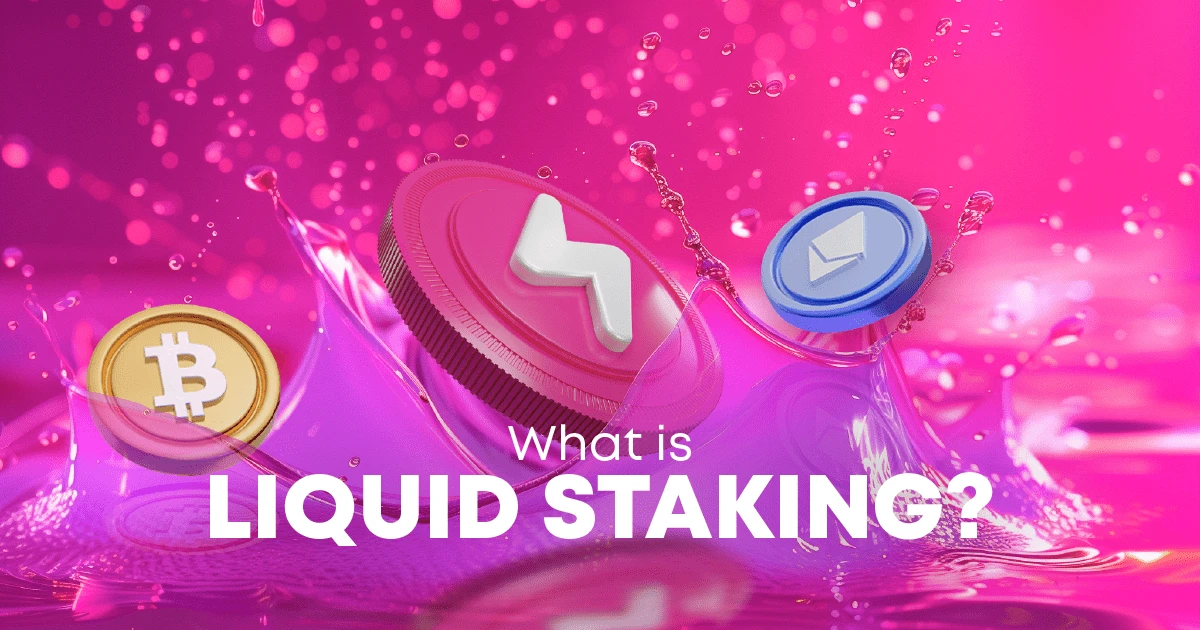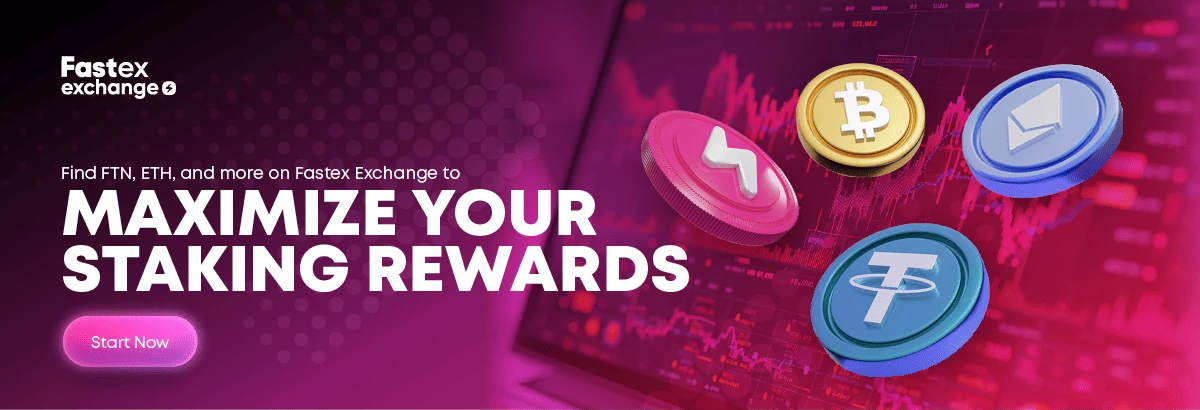On This Page

What is Liquid Staking?
DeFi, or decentralized financial instruments allows asset holders to make passive income. Staking is one of the most common ways to earn money in DeFi. Liquid staking is the process of getting an item in return for staking a cryptocurrency on a proof-of-stake blockchain. In this article, we'll learn more about liquid staking, and its challenges with traditional staking.
How does Liquid Staking Work?
Staking helps to protect blockchain networks, such as PoS systems, by locking up some of your digital currencies to confirm transactions. Usually, this locks up your assets, but liquid staking makes it more flexible, allowing you to keep using your digital currency while supporting the network.
Liquid staking offers the same benefits as conventional staking, such as receiving rewards and supporting blockchain networks, while increasing flexibility. When you stake your assets, you receive Liquid Staking Tokens (LSTs), which represent your staked assets and the interest they earn. Their key advantage is liquidity: you can trade these LSTs or use them in a variety of decentralized finance (DeFi) apps, leaving your cash available for other activities.
This shift in staking is beneficial for those who want to use their assets more actively in the DeFi space.
Platforms that offer liquid staking, such as Ethereum, let you stake your ETH, receive LSTs, and then use these tokens in different DeFi protocols. This makes liquid staking more approachable and user-friendly, reducing entry barriers and offering the dual benefit of earning potential and liquidity.
Quick Recap:
Flexibility Without Locking: Get staking rewards while keeping assets accessible.
Derivative Tokens: LSTs represent your staked assets, useful in trading and DeFi.
Enhanced Liquidity: Use your staked assets freely in various crypto activities.
Seamless DeFi Integration: Integrate easily into the DeFi ecosystem for more opportunities.
Accessibility for All: An easy-to-understand process that welcomes beginners.
Maintaining Liquidity
Maintaining liquidity has various benefits:
All these factors lead us to understand that liquid staking enables asset holders to spend their cash more efficiently and minimize risks in the cryptocurrency and DeFi markets. However, it is critical to understand how liquid staking addresses cutting risks.
Reduced Slashing Risk
Slashing is a blockchain concept that you should be familiar with if you plan on staking your assets. Simply, it is a cutting act of punishing validators who violate the rules or act against the network's interests. So, how can liquid staking help to reduce risk?
Liquid staking is designed to decrease risks through multiple techniques, making it a safer and better option for blockchain ecosystem players.
Composability in DeFi (Decentralized Finance)
Liquid staking allows your assets to participate in different DeFi activities. Composability in DeFi means these different DeFi protocols and platforms can work together smoothly, creating a flexible financial system. Here's how the liquid staking helps to enhance it:
Here is how the liquid staking boosts DeFi's composability in several ways. It tokenizes staked assets, enhances liquidity, provides diverse collateral utilities, and incentivizes participation, fostering a more interconnected, resilient, and dynamic DeFi ecosystem.
Earning Staking Rewards
Liquid staking creates a more interactive and financially rewarding staking experience for everyone involved. Here's how you can maximize your income through this innovative approach:

Enhanced Yield Opportunities
Liquid staking expands the possibilities for generating yield by seamlessly integrating with diverse DeFi platforms and strategies. Here's a full explanation:
Simplified Staking Process
If you previously thought of traditional staking as complicated, liquid staking is a breath of fresh air. Its two main factors are:
Liquid Staking as a Service
Besides everything we've mentioned, there is Liquid Staking as a Service. It lowers the entry barrier, lets you dip your toes into other DeFi opportunities, and keeps things transparent and straightforward. All in all, it’s a more rewarding and hassle-free way to stake your assets.
Liquid Staking as a Service (LSaaS) takes care of the tough stuff so you can focus on earning. Here’s how it does that:
Top 3 Liquid Staking Providers
The liquid staking landscape is quite dynamic, with various providers offering unique solutions to cater to the different needs of the staking community. Among them, we've followed the following three liquid staking providers for their services:
Lolik
LOLIK is a decentralized crypto staking platform designed to meet the evolving demands of the blockchain space. The platform specializes in both traditional Proof of Stake (PoS) and a newer method called Activity Staking, mainly geared towards smart contract applications.
LOLIK supports multiple blockchain networks, such as Ethereum, Polygon, and, notably, the Bahamut blockchain, which is based on a Proof of Stake and Activity (PoSA) model. Users can look forward to liquid staking, which means you don't have to lock away your assets indefinitely to earn rewards.
Additionally, the platform emphasizes user-friendliness and accessibility, aiming to simplify staking for both newcomers and experienced crypto users. It operates on the principle of decentralization, focusing on creating a transparent, secure, and community-driven environment for staking.
Lido
Lido aims to simplify the often complex crypto staking by removing minimum staking requirements that typically limit participation. Lido is run by a Decentralized Autonomous Organization (DAO), ensuring the platform remains secure and effectively managed. Lido offers its services across blockchains like Ethereum, Terra, and Solana, making staking more accessible and flexible for a broad user base.
Rocket Pool
Rocket Pool addresses two major difficulties in Ethereum 2.0 staking: the high financial and hardware requirements. When you stake, you get rETH tokens representing your staked Ethereum and any rewards you accumulate. These tokens are not idle; you can use or trade them within the Ethereum ecosystem. Rocket Pool creates a more distributed and efficient staking process by leveraging node operators to run validators. Innovative features like 8-ETH bonded minipools and options for Beacon Chain withdrawals further enhance the user experience, making it an attractive and user-friendly platform for Ethereum 2.0 staking.
What are the Main Risks of Liquid Staking
If, after reading through this article, you seriously consider liquid stake as a source of income, you should realize that, like any income-generating activity, LSD has its risks. And before diving deeper into this field, it is better to study and understand beforehand:
If you're thinking about liquid staking, do your homework. Understand the ins and outs of the protocol you're using, keep tabs on the regulatory environment, and diversify to mitigate risks. Your due diligence today can save you a lot of headaches tomorrow.
Final Words and Key Takeaways
We've covered a lot regarding liquid staking, specifically LSD. So, the technology is indeed a breakthrough in the crypto industry. And despite the potential risks, LSD continues to grow, as does the dominance of liquid staking provider projects, demonstrating that the buzz around LSD will unlikely subside in the coming year.
Decentralized liquid staking protocols are a more viable alternative to pools and exchanges, as they help to maintain security without sacrificing decentralization..
FAQ
How to start liquid staking?
To start liquid staking, you should deposit your assets into a liquid staking protocol. In return, you'll receive derivative tokens, known as liquid staking tokens. These tokens represent your staked assets and any interest you accumulate. You can trade or use these tokens in other decentralized finance (DeFi) activities.
Is liquid staking safe?
It's generally considered to be secure if you use reputable platforms. Always do your own research and understand the risks involved. Consult the article above to see the top three liquid staking platforms.
What are liquid staking derivatives?
Liquid staking derivatives (often abbreviated as LSDs) are tokens you receive when you stake your assets in a liquid staking protocol. These tokens represent both your staked assets and any interest you accumulate to be traded or used in other DeFi activities.
Is liquidity better than staking?
Liquid staking offers more flexibility than traditional staking. You can earn staking rewards without locking up your assets and use your staked assets in other crypto activities. This makes liquid staking more advantageous for those who want both liquidity and earning potential.
Are there any minimum requirements for participating in liquid staking?
Some platforms make it really easy for anyone to get involved. For example, in Ethereum, you can stake any amount of ETH. There are no minimum requirements mentioned for most platforms.
Can I participate in other DeFi activities with my liquid-staked tokens?
Yes, you can. The liquid staking tokens you receive can be used in other DeFi activities like lending and yield farming without needing to un-stake.
Which cryptocurrencies can be used for liquid staking?
Multiple blockchain networks, such as Ethereum and Bahamut, are supported for liquid staking. Please consult each respective staking platform to see their network support.
Disclaimer: Includes third-party opinions. No financial advice.

